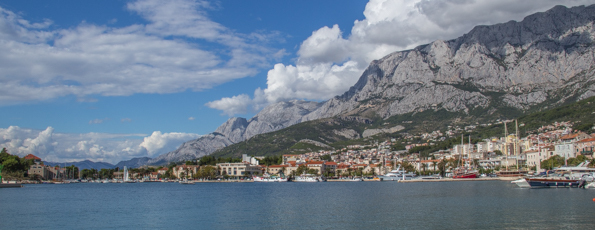
Leaving the harbour-side I was soon immersed in cool shade tangy with the scent of pine. Wild cyclamen carpeted the ground around me. They resembled lilac coloured jewels studding a rich brown mantle. Occasionally, through the trees I glimpsed the sparkling, profound blue of a calm sea and the bright azure of a serene sky. It was peaceful, relaxing and uplifting all at once. I was walking around Cape Osejava. Across the sparkling water I could see the Peninsula of Saint Peter. These two fingers of land protect the Croatian town of Makarska that nestles in the crescent between them.

Saint Peter’s Peninsula is also wooded and criss-crossed by paths that lead to its various places of interest. When I walked over the peninsula I had approached it from the permanent souvenir market between the town and the main beach. Beyond the market a large, pebble beach stretches around a large bay. Dramatic back cloth of the mountains that tower above the town and the two islands, Brac and Hvar, just off its shores.
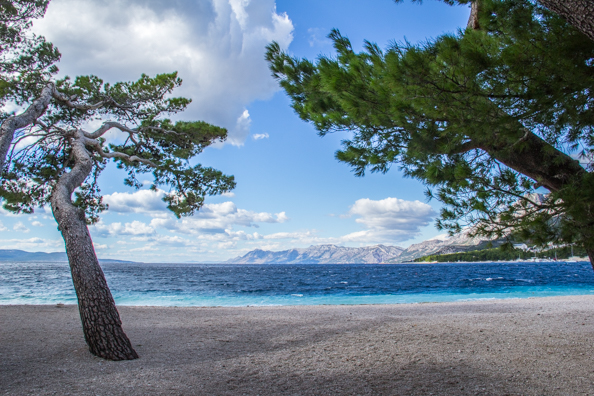
After strolling along the beach with a small black squirrel my only company I climbed up on to the peninsula itself and followed a footpath around the outside to the lighthouse of Saint Peter. The path continued by the sea and then turned inland where I found the small church of Saint Peter. This simple church was built in the fifteenth century on the site of a sixth century church. Next I passed an old defensive tower as the path lead me back towards the sea and the iconic statue of Saint Peter himself. The iron railings surrounding the statue are covered in lovers’ padlocks clinging to the metal like a swarm of bees. Legend has it that if a couple lock a padlock on these railings and then throw the key into the sea their union will last forever.
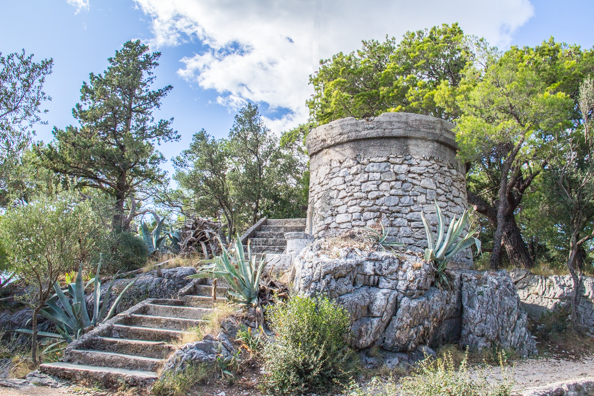
As I continued on my way around Cape Osejava I had a good view of the harbour of Makarska fringed by the buildings of this historic town. I could pick out the distinctive steeple of the old Franciscan monastery at one end of the town. Today the old monastery houses the Malacological museum, more commonly known as the Shell Museum, and the Institute of Sea and Plants. I had visited this museum earlier that day and I had met its curator, Sister Marija Edita Šolić. She had worked with the founder, Doctor Fra Jure Radic (1920-1990), a Franciscan priest and scholar. His private collection of shells from around the world had formed the basis of the museum which opened in 1963. Doctor Radic had been a pioneer of the need to both protect, conserve and nurture nature in the face of modern threats such as pollution. Sister Marija has a PhD in Biology and is an enthusiastic proponent of Doctor Radic’s philosophy. In between her other duties, greeting new visitors and stocking the replenishing paper in the toilet, she showed me around the garden that surrounds the old Franciscan church next to the cloisters where the museum is housed. In this small garden a collection of Mediterranean plants flourishes between a scattering of ancient artefacts. Doctor Radic also founded the Kotišina botanical gardens a forty-five minutes’ walk from the centre of Makarska. It was not possible to visit the old Franciscan church as the order is a closed order and the church is only open for services on holy days.
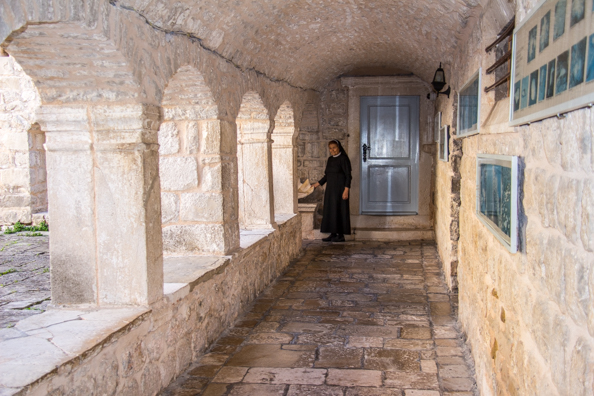
Next to the old Franciscan monastery is its large, new church which is open to the public. This impressive new church of the Franciscan monastery was built to house the ever-increasing congregation. In front of the church is a statue of a Franciscan monk. The interior of the church is very inviting with its light bright colours and beautiful painting behind the altar.
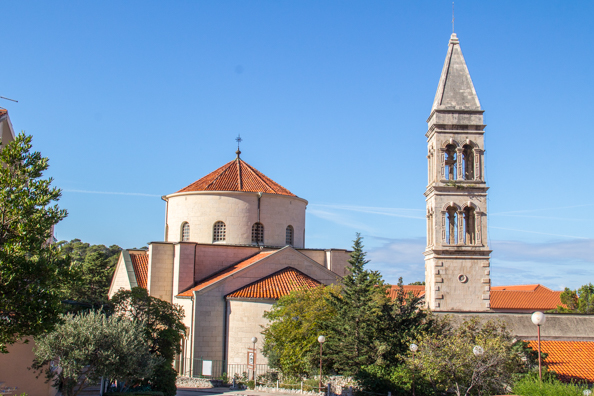
In the middle of the waterfront I could just see the bell tower of the old Church of Saint Philip of Neri above the trees lining the promenade that stretches along the water front. This church also belongs to a closed order and is rarely open to the public. The church is sandwiched between buildings on either side of it. It was once part of the Monastery of the Sacred Oratory which was destroyed by fire.
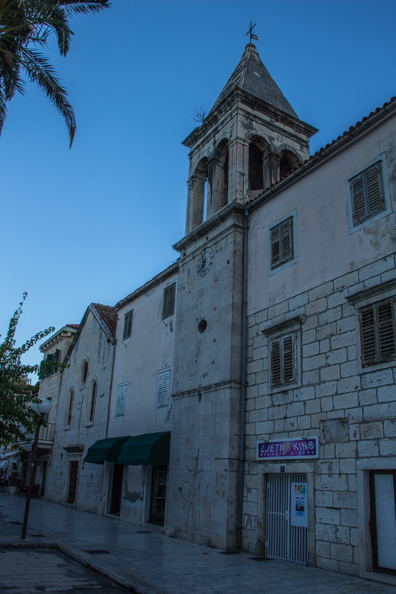
One historic building that is in the public domain is the Palazzo Tonoli that today houses the Town Museum. This baroque palace was built during the second half of the eighteenth century. The museum has two parts. The main part of the museum is on the first floor of this building and comprises three rooms of exhibits including a collection of coins. The second part resembles a shop front with access directly from the street. The walls of this large room are lined with illustrated information boards detailing. An enthusiastic young woman is in charge of this section. After gently suggesting I should start at the beginning instead of plunging straight into the Venetian period, she led me through the history of the town. I was grateful for her explanation as it gave me an idea of the architecture I would find here.

In the centre of town, the steeple of the Baroque cathedral of Saint Mark pinpoints Kačić Square, the main square of the town. This square is named after the most famous Dalmatian poet, Andrija Kačić Miošić, whose statue presides over the many cultural events that take place here.
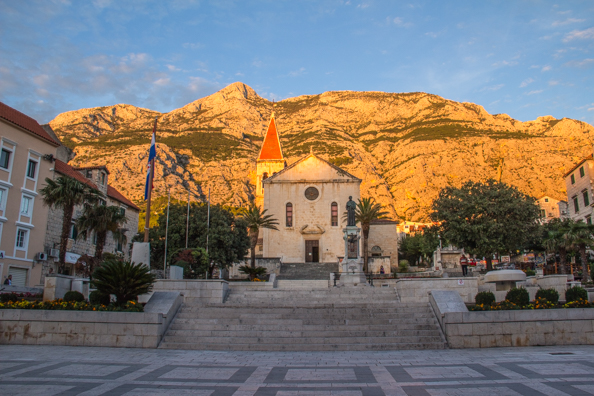
Earlier that day I had resisted the temptation to stop for a coffee in one of the bars that encircled the square. It would have been easy to while away an hour over a coffee watching people going about their business. There is a steady flow of shoppers to and from the permanent fruit and vegetable market, the Green Market, in the corner of the square. The figs had just been harvested and mounds of this dried fruit were the centre-piece of several stalls. Luscious fruits and bottles of olive oil and local liqueurs were also a prominent feature.
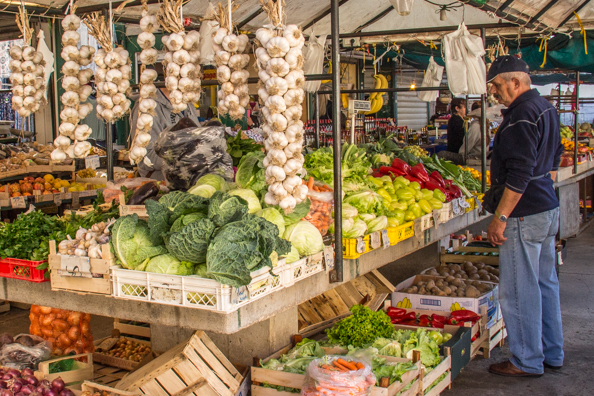
I could just make out the bright red and yellow snake of the Fun Train as it made its way along the sea-front. This train does a twenty-minute tour of the town – a good way for visitors to orientate themselves. In theory there are no official stops on the route which starts and ends by the permanent market but in practice the jovial driver is happy to pick up passengers from any viable place as he makes his way around the town.
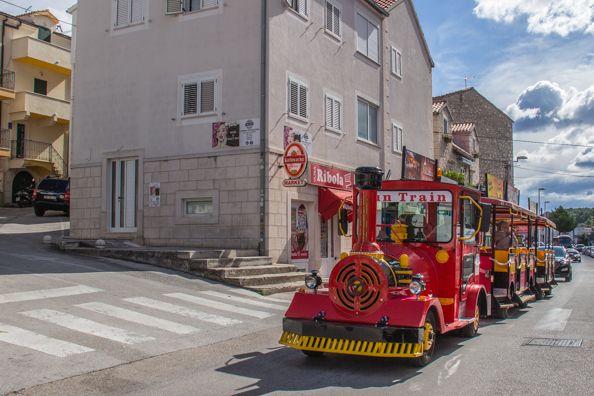
Somewhere in the melee of buildings that straddle up the lower slopes of Mount Biokovo is the Kobona Kalelarga a popular Dalmatian restaurant that is rapidly making a name for itself throughout the region. This restaurant is housed in an old building at the top of Kalelarga street. The whole street is populated by some of the oldest buildings in a town that was battered and bruised by the struggle for supremacy on this coastline between the Ottomans and the Venetians. Eventually, the Venetians prevailed and during a period of stability build some beautiful Baroque edifices including the old town hall. Sadly, many of these buildings were destroyed during the Second World War but Kalelarga Street retains the flavour of Venice.
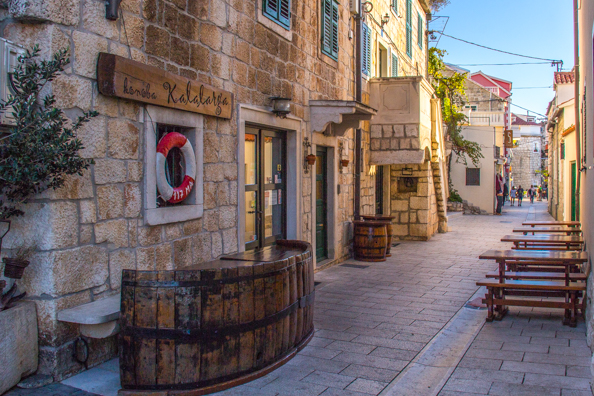
Eating in Kobona Kalelarga is an unusual experience as there is no menu. Every day fresh produce is purchased and different dishes are prepared. The choice is meat or fish preceded by a starter made from local produce. I ate with a group and we fitted nicely around a large wooden table made from a small boat. I had chosen fish and had a mixture of shark fish and sword fish. Both melted in my mouth and were accompanied by a selection of fresh vegetables.
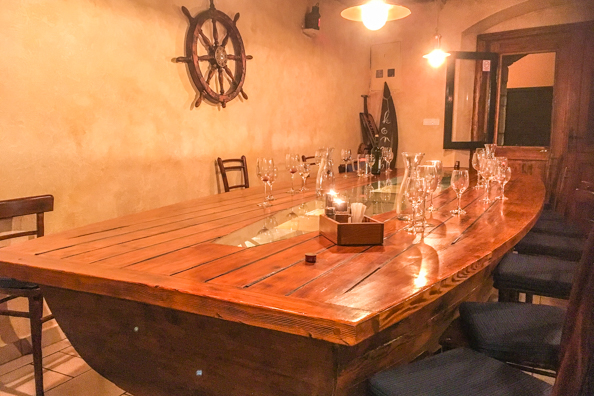
As I was not offered a dessert which is not unusual in Croatia I walked back to the sea front and treated myself to a large ice-cream from Romana a popular café bar that also serves good coffee and delicious cakes. I sat on a bench by the water enjoying the sound of it gently lapping against the harbour wall and watching reflections from the street lights dancing in its depths. It was a great way to end the evening. Although an alternative would have been a visit to the Astronomy Observatory for a bit of star gazing. Surrounded by the Astro park this new and unique tourist attraction only opened in May 2017 and incorporates a monument to those who died in the Second World War.
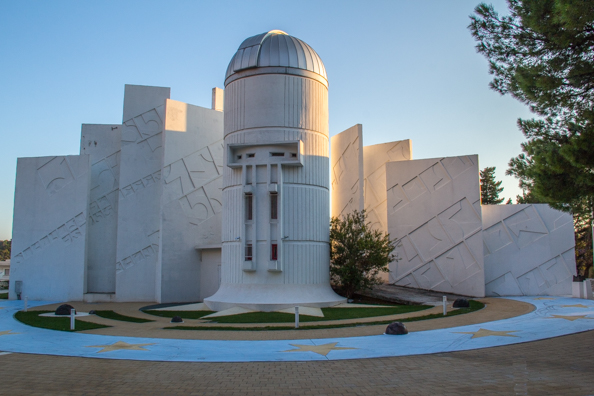
************************************************************************
Getting There
I spent a week in Makarska on a holiday organised by Solos Holidays Ltd. We flew to Split with Norwegian Air and stayed in the modern, sea-front hotel, Hotel Biokovo
Now Available on GPSmyCity.com
This article is now featured on GPSmyCity. To download this article for offline reading or travel directions to the attractions highlighted in this article, go to Walking Tours in Makarska on GPSmyCity